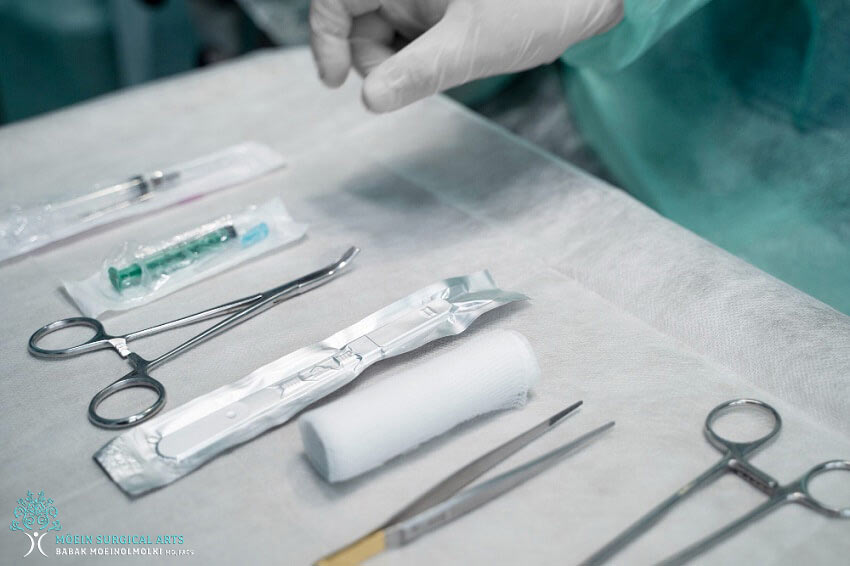Understanding Transgender Surgery MTF
Male-to-female (MTF) transgender surgery, which is also referred to as feminization surgery, is an important component of the transwoman transition. These procedures are becoming more popular every year. In 2019, for example, the American Society of Plastic Surgeons reported that 11,000 gender confirmation surgeries were performed in the United States, which is 10% to 15% higher than the year before.
There are both physical and psychological benefits to this procedure, which focuses on the three defining characteristics of the female form. These include the breasts, rounded buttocks, and a low waist-to-hip ratio. Gender-affirming surgery can enhance all three.
If you are considering transgender surgery, you should know that the benefits include the improvement of your self-esteem and a more assured self-image. Your gender identity will also be more aligned with your appearance, allowing you to blend in much better in society as a woman. This is known as gender congruence.
Read our article: How Does Cosmetic Surgery Build Self-Esteem and Confidence?
Here is all you need to know about this amazing surgery, which is the best way to attain the feminine form you want to help you feel more at home in the body you were born into.
What is Transgender Surgery and How is it Performed?
When it comes to feminizing surgery, you have a few different options, depending on your gender congruence goals. There is “top” surgery that can increase the size of your breasts. This involves breast augmentation or fat grafting, or both.
Then there is “bottom” surgery that involves the removal of your testicles. This procedure is called orchiectomy. Vaginoplasty can also be performed, which is where your testicles and penis are removed to form a vagina, labia, and clitoris.
Transgender surgery may even involve facial procedures and body contouring to develop a more feminine appearance.
How to Prepare for Feminizing Surgery

Before undergoing transgender MTF surgery, you will meet with your surgeon. You should look for a surgeon who is board-certified in cosmetic surgery, such as Dr. Babak Moein of Moein Surgical Arts. During the initial consultation with your surgeon, you will be able to discuss the options of surgery and the potential results. You will learn about anesthesia, where on the body each stage of the surgery will be performed, and any follow-up procedures you may need.
It is important that you follow your surgeon’s instructions on how to prepare for the procedure. You will be given specific guidelines, for example, such as what to eat or drink, to quit smoking, and how to adjust current medications so they don’t interfere with the surgical medications, such as anesthesia.
Read our article: Why Quitting Smoking Before Cosmetic Surgery is a Good Idea (Including Methods to Help You Quit)
Before you can be cleared for transgender surgery, the surgeon will review your medical history and run a variety of tests, which could include lab tests meant to measure lipids, blood count, blood sugar, electrolytes, liver enzymes, and the hormone prolactin.
You may discuss sperm freezing, as well, which is called sperm cryopreservation, in case having children is important to you at some stage in the future.
Your surgeon will also order a behavioral health evaluation with an expert in transgender health. This professional will assess your gender identity and gender dysphoria, the impact of your gender on your home, social, and work environments, and your mood or other mental health concerns. Other assessments include sexual health concerns and your goals and expectations of treatment.
Letter of Support
One more important aspect needs to be covered. Before you can have non-genital feminizing surgery, you need a letter of support from a behavioral health provider with expertise in transgender health. The letter must state that you have the ability to make an informed decision and consent to treatment and that you have managed or are managing any medical or mental health concerns. These are criteria set by the World Professional Association of Transgender Health (WPATH) before you can undergo transgender MTF surgery.
You also need two letters of support from two separate behavioral health providers with expertise in transgender health. These must state that you meet the standards for undergoing hormone therapy for at least twelve months and that you have been living in a gender role that matches your gender identity for a span of twelve continuous months.
Once you have all the requirements met, you can be scheduled for surgery.
Read our article: Tips for Scheduling Your First Cosmetic Procedure with a Cosmetic Surgeon
Top Surgery for MTF Gender Transition
Taking estrogen can stimulate breast growth but this usually isn’t enough to satisfy the appearance requirements of a transwoman. Top surgery can increase your breast size using breast augmentation. Breast implants can be used or you can opt for fat grafting. Some transwomen choose both for more natural-looking results.
Read our article: What is Natural Fat Grafting? And How Long Does It Last?
This surgery involves incisions that are placed near the armpit, around the areola, or in the crease underneath the breast. The breast implants are placed under the breast tissue. Fat grafting involves extracting fat from another area of your body before it is injected into the breasts. This is known as natural breast augmentation.
Read our article: All About Natural Breast Augmentation
If taking feminizing hormones has not succeeded in making the breasts large enough, tissue expanders can be used. These are placed in front of your chest muscles. Every few weeks, your surgeon injects a small amount of saline into the expanders. This slowly stretches the chest skin and breast tissue to make room for breast implants. The tissue expanders are removed before the breast implants are inserted.
Genital Surgery for Gender Confirmation Surgery

The testicles are removed during a procedure called orchiectomy. Having this procedure may eliminate the need to take testosterone blockers since the testicles produce sperm and testosterone. The procedure can also reduce the amount of estrogen your body may need to maintain your desired feminine appearance.
The orchiectomy is performed on an outpatient basis. You are first given an anesthetic, which numbs the testicular region. You will be awake during this procedure. Or you can be placed under general anesthesia, which will put you to sleep.
The removal of your testicles involves an incision in your scrotum. The testicles are removed through the opening.
Your surgeon also has the option of performing an orchiectomy as part of a vaginoplasty procedure.
Vaginoplasty During Gender Affirmation Surgery
This technique allows for the creation of a vagina. First, the skin from the penis shaft and scrotum is used to develop a vaginal canal. This same tissue can also be used to create the labia during a technique called labiaplasty. In some cases, skin is taken from another area of the body, such as the colon, to create the vagina.
The surgeon creates the clitoris during a procedure called clitoroplasty. The glans or tip of the penis and nerves that supply it are used for this technique. The testicles are also removed as part of this surgery.
To ensure the tissue used during these procedures are hair-free, surgeons have the option of using electrolysis or laser hair removal on the penile and scrotal areas. This is not an instant process. In fact, it can take several months for the tissue to become bare enough to be useful for the vaginoplasty techniques.
Following a vaginoplasty, a catheter is placed in your urethra to collect urine. You are closely monitored for a week after surgery in the surgical center or hospital, and recovery can take a couple of months. Your doctor will give you instructions on how to care for your surgical wounds, as well as when it will be safe to have sexual intercourse with your new vagina.
You will be provided with a set of vaginal dilators that aim to increase the size of your vagina. These help you both lengthen and stretch your vagina and must be used on a regular basis.
It should be noted that your prostate gland is not removed during a vaginoplasty. That means you’ll need to follow age-appropriate recommendations for regular cancer screenings. Urinary obstructive symptoms from benign prostate enlargement are also possible in the future.
Facial Surgery for Transgender Women
Transgender surgery can include facial surgery that aims to turn masculine features into feminine features. Your hairline may be moved to create a smaller forehead. Your lips and cheekbones can also be altered using facial implants. Some transwomen choose to have their jaws and chins reshaped or even resized. When bone is reduced, skin-tightening surgery may be needed to create the expected appearance.
Read our article: Cosmetic Surgery for a Defined Jawline: Is It Possible?
All of these surgeries are performed on an outpatient basis, which means no hospital stay is required. You should be fully recovered from facial surgery within two weeks. However, jaw surgeries can take a week or two longer to heal.
You have the option of having a tracheal shave as part of your facial surgery. This procedure is meant to minimize your Adam’s apple, which is medically referred to as thyroid cartilage. During this procedure, the surgeon makes a small incision underneath the chin. The scar from the surgery is typically hidden within your neck folds, which makes it invisible once healed. The surgeon can reshape and reduce the cartilage as needed. This is also an outpatient surgery with no hospital stay needed.
Body Contouring for Transgender Women

Buttocks augmentation can help you achieve a feminine backside. You can opt for buttocks implants or the Brazilian butt lift. A Brazilian butt lift is the preferred procedure for giving you the rounder, fuller backside with the S-curve silhouette that can give you an hourglass figure. This procedure will also improve your waist-to-hip ratio during a less invasive technique known as fat transfer.
Read our article: Key Benefits of the Brazilian Butt Lift
During the Brazilian butt lift procedure, liposuction is used to move fat from a donor area of your body to the backside. The technique is performed under conscious sedation, which means you’ll be awake but fully relaxed while the fat is extracted and placed into your buttocks. The fatty tissue is purified before it is injected strategically into your backside, which gives you enhanced shape and volume. The results look natural since your own fat is used.
Your surgeon will usually overfill the backside with fatty tissue since some of it will be absorbed by your body. After the initial swelling subsides and absorption takes place, the natural-looking results of your BBL procedure will show through.
Another body contouring technique many transwomen opt for is known as trunk liposuction. This is another way to improve your waist-to-hip ratio. The results give you a tapered waist and feminine hips. The areas most commonly targeted with trunk liposuction include the love handles, lower back, and abdomen. The technique uses light sedation and local anesthesia and takes around an hour.
During a trunk liposuction procedure, tiny incisions are made around the target area before unwanted fat is gently suctioned out using liposuction. This technique can be combined with the BBL procedure as your donor site before the unwanted fat is used to make your backside more prominent.
Which Transgender MTF Procedures Are Right for You?
As you can see, there are many options you and your surgeon can agree upon that can give you the feminine features you desire. Since each patient has her own needs and expectations that are specifically unique to her, your surgeon will provide you with an individualized treatment plan that encompasses all the techniques you want for the results you expect.
What Results Can You Expect from Transgender MTF Surgery?
Gender confirming surgery has been shown to have a positive impact on not only your self-esteem and well-being but also your sexual function.
It is important that you make all follow-up appointments with your cosmetic surgeon. The best outcomes are linked with long-term postoperative care.
Still have questions about transgender surgery, such as whether these techniques are right for your needs and goals? Schedule a consultation with Dr. Babak Moein of Moein Surgical Arts and get all your questions answered. You can learn about the benefits and risks of each technique, how long they take, fees and financing, and the results you can expect. Dial now to get started at
.
